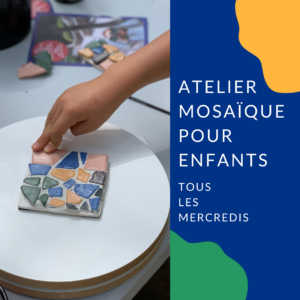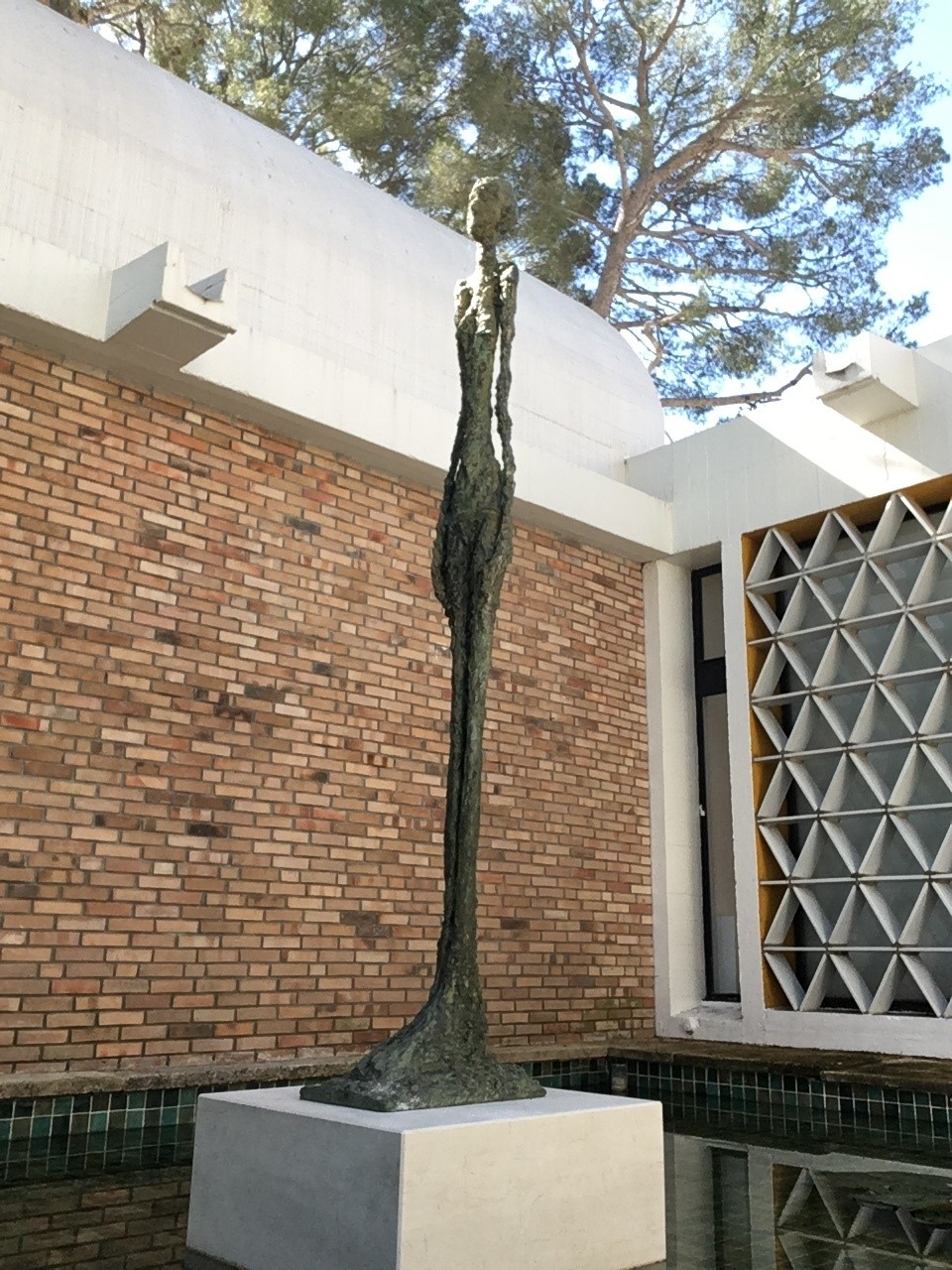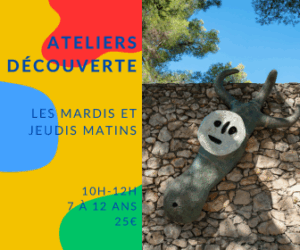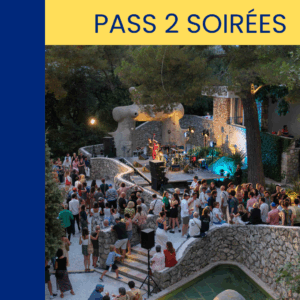
These sculptures are usually presented in the Giacometti Courtyard
These sculptures are usually presented in the Giacometti Courtyard. They are being exhibited in these pools while the exhibition is on. These two versions of the Tall Standing Woman come from the Fondation Maeght collection. They are the completion of work Giacometti started in 1947. This was the time when Alberto Giacometti developed these emaciated figures, whose grainy epidermis bears the mark of the artist’s hand.
These works were designed for the Square of the Chase Manhattan Bank and are the biggest the artist ever made. A ladder was required for the size of these figures, at more than 2.70 metres. If the firm stance of a very large size was essential to counterbalance the imposing façade of the Chase Manhattan Bank skyscraper, Giacometti satisfied his desire to test how far he could go in the size of his works: “I’m completely against the usual practice of making small sculptures and enlarging them mechanically. Either I can make it as big as I want or I can’t… I’m interested in discovering the maximum height I can achieve working by hand. So these large woman’s figures are exactly a maximum height. They are almost already beyond anything that’s possible, and in this case we’re almost talking about something completely imaginary”.
After the Women of Venice in 1956, the series of the four Tall Standing Women of 1960 is the last the artist devoted to the female nude. These works were designed for the Square of the Chase Manhattan Bank and are the biggest the artist ever made.
Alberto Giacometti (1901 - 1966)
On 17 January 1959 Alberto Giacometti accepted, for the first time, a public commission, a project to fit out the square of the Chase Manhattan Bank in New York. Giacometti designed three sculptures, each of which represented one of his fundamental aesthetic concerns: a Walking Man, a Tall Standing Woman and a Large Head (clearly an effigy of his brother Diego) on a base. These large sculptures, which he felt summed up all his research, were finished in 1960. They were first made in plaster then cast in bronze to allow the sculptor to see them in their final form. Giacometti ultimately refused to present them to the Chase Manhattan Bank board. The bank rejected the project but Aimé Maeght became interested in the sculptures that were made. He had a privileged relationship with the artist, and was responsible for selling his work in Europe. He acquired a copy of each sculpture and invited Giacometti to install his work in the courtyard of the Foundation in 1964.



